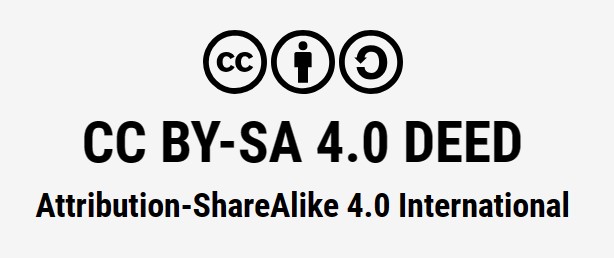Pengaruh Metode Applicative Language Teaching (ATL) Terhaadap Hasil Belajar Nahwu Pada Orang Tua Pemula di Masjid Nurul Amin Pekanbaru
The Influence of Applicative Language Teaching (ALT) Method on Nahwu Learning Outcomes Among The Parent's Beginner at Nurul Amin Mosque Pekanbaru
DOI:
https://doi.org/10.22437/addhuha.v5i2.35608Keywords:
Applicative Language Teahing Method, Nahwu, The BeginnersAbstract
This research is a qualitative research to determine the urgency of the Arabic language, its objectives, materials, and learning methods for beginner parents at the Nurul Amin mosque Pandau Jaya, Riau. and also this research is a quantitative research to determine the effect of the Applicative Language Teaching method on the learning outcomes of Nahwu for beginner parents in the same place with different professions. the researchers used interviews and written tests to collect data. and they carry out selection, classification, and draw conclusions to analyze qualitative data. and they also carried out normality tests and t tests using the SPSS 25 application to analyze quantitative data. The results of the research are as follows: (1) Arabic has a very important position for every Muslim so that it is considered that this language is his identity. so they should know the urgency, objectives, basic materials, and various learning methods. and the method that is suitable for beginners is the Applicative Language Teaching method. (2) in terms of the normality test, it is known that the pre-test average is 0.130 and the post-test average is 0.594, which is greater than 0.05, so both data are normally distributed. and in terms of the t test, it is known that the calculated t value of 4.403 is greater than the t table of 2.306 and the Sig value. 2 tailed 0.03 is smaller than 0.05, so Ha is accepted and Ho is rejected, namely the Applicative language teaching method has a significant effect on the learning outcomes of Nahwu science for beginners.
Downloads
References
Aflisia, N., & Hazuar, H. (2020). Pengembangan Bahan Ajar Bahasa Arab Berbasis Pendekatan Komunikatif. Arabiyatuna: Jurnal Bahasa Arab, 4(1), 111. https://doi.org/10.29240/jba.v4i1.1380
Agustina, M., & Juliar Apko, H. (2021). Kompetensi Guru: Metode Praktik dalam Pembelajaran IPA. At-Tarbawi, 8(1),55–70. https://doi.org/10.32505/tarbawi.v13i1.2741
Al-Haddad, A. A. (2024). Simplifying Applied Grammar For Non-Arabic Speakers: Tabsith al-Nahwy al-Tathbiqy Li al-Nathiqin Bi Ghoiri al-Arabiyyah. Al-Qanatir: International Journal of Islamic Studies, 33(1), 227–246.
Arsyad, M. H. (2019). Metode-Metode Pembelajaran Bahasa Arab Berdasarkan Pendekatan Komunikatif Untuk Meningkatkan Kecakapan Berbahasa. Shaut Al Arabiyyah, 7(1), 13. https://doi.org/10.24252/saa.v1i1.8269
Baroroh, R. U., & Rahmawati, F. N. (2020). Metode-Metode Dalam Pembelajaran Keterampilan Bahasa Arab Reseptif. Urwatul Wutsqo: Jurnal Studi Kependidikan Dan Keislaman, 9(2), 179–196.https://doi.org/10.54437/urwatulwutsqo.v9i2.181
Ibrahim, H. A.-H. (2024). Arabic Language Literacy as an All-Important Aid in English Language Teaching to Arabic-Speaking Students. Journal of Advanced Research in Education, 3(3), 1–6. https://doi.org/10.56397/jare.2024.05.01
Idris, M. A., Nurbayan, Y., Supriadi, R., & Saputra, D. D. D. (2023). Menilik Perspektif Positif Non-Muslim Terhadap Urgensi Bahasa Arab Sebagai Upaya Menampik Stigma Sakral Dalam Masyarakat Umum Di Indonesia. FiTUA: Jurnal Studi Islam, 4(1), 56–70. https://doi.org/10.47625/fitua.v4i1.445
Irwandi, S. S., & Pd, M. (2020). Pembelajaran Bahasa Kedua Untuk Orang Dewasa. Bahasa Kedua Untuk Orang Dewasa Jurnal PPKn & Hukum_____________________________Vol, 15(1), 114.
Juryatina, J., & Amrin, A. (2021). Students’ interest in Arabic language learning: the roles of teacher. Journal of Educational Management and Instruction (JEMIN), 1(1), 40–49. https://doi.org/10.22515/jemin.v1i1.3459
Mulyani, S., & Sholeh, A. (2023). Paradigma Pembelajaran Bahasa Arab (Analisis Kontrastif Metode Pembelajaran Konvensional dan Kontemporer). Takuana: Jurnal Pendidikan, Sains, Dan Humaniora, 2(1), 63–75.https://doi.org/10.56113/takuana.v2i1.71
Munir, M., Alsaied, M. A., Islam, U., Abdurrahman, N. K. H., Pekalongan, W., & Emirates, U. A. (2023). Applicative Arabic Language Learning Media: Innovations for Arabic Language Education Lecturers in Higher Education Arabi: Journal of Arabic Studies. 8(2), 136–147.
Nasution, N. S., & Lubis, L. (2023). Urgensi Pembelajaran Bahasa Arab dalam Pendidikan Islam. Jurnal Simki Pedagogia, 6(1), 181–191. https://doi.org/10.29407/jsp.v6i1.227
Pera Aprizal, A. (2021). Urgensi Pembelajaran Bahasa Arab dalam Pendidikan Islam. Jurnal Pendidikan Guru, 2(2), 181–191. https://doi.org/10.47783/jurpendigu.v2i2.232
Pratama, F. A. (2020). Developing the Textbook for Applied Arabic Syntax and Its Employment Based on the Collaborative Learning Strategy for the University Level. Al-Arabi: Journal of Teaching Arabic as a Foreign Language, 4(2), 203231.
Pratama, F. A., Zamroni, M. R., & Zakiya, Z. (2023). Tatbiiq Istiraatiijiyyaati Al-Taliim Al-Ta’aaunii fii Ta’liim ‘Ilmi Al-Nahwi bi Istikhdaami kitaabi Al-Nahwi Al-Waadihi fii Ma’hadi Al-Qalami bi Al-Madrasati Al-Tsaanawiyyati Madiinati Malang. Journal of Language Intelligence and Culture, 5(1), 45–54.
Putri, A. M., Iryani, E., & Pratama, F. A. (2024). The Influence of Self-Efficacy on Understanding Arabic Syntax in Arabic Language Education Study Program Students, Jambi University Class. Lisanan Arabiya: Jurnal Pendidikan Bahasa Arab, 8(1), 56–69.
Rahman, A. (2021). Peran Lingkungan Bahasa Arab Dalam Meningkatkan Penguasaan Bahasa Arab Pada Pesantren Izzur Risalah Panyabungan. Prosiding Konferensi Nasional I Hasil Pengabdian Masyarakat, 1(1), 83–92.
Rivki, M., & Bachtiar, A. M. (2017). Implementasi algoritma K-Nearest Neighbor dalam pengklasifikasian follower twitter yang menggunakan Bahasa Indonesia. Jurnal Sistem Informasi, 13(1), 31–37.
Saadah, M., Prasetiyo, Y. C., & Rahmayati, G. T. (2022). Strategi Dalam Menjaga Keabsahan Data Pada Penelitian Kualitatif. Al-’Adad: Jurnal Tadris Matematika, 1(2), 54–64. https://doi.org/10.24260/add.v1i2.1113
Sakdiah, N., & Sihombing, F. (2023). Problematika Pembelajaran Bahasa Arab. Jurnal Sathar, 1(1), 34–41. https://doi.org/10.59548/js.v1i1.41
Sartono, S. (2020). Bahasa Internasional. Badan Pengembangan Dan Pembinaan Bahasa, Kementerian Pendidikan Kebudayaan Riset Dan Teknologi. https://badanbahasa.kemdikbud.go.id/artikel-detail/864/bahasa-internasional
Silvia, N., Saepudin, A. A., Mufidah, N., & Amrullah, A. M. K. (2023). Manajemen Perencanaan dan Pengorganisasian Pembelajaran Bahasa Arab. Alibbaa’: Jurnal Pendidikan Bahasa Arab, 4(1), 108–123. https://doi.org/10.19105/ajpba.v4i1.7497
Suib, M., Saputra, D., Fidri, M., & Nurhayati. (2022). Strategi Pembelajaran Berdasarkan Unsur-Unsur Bahasa Arab. Jurnal As-Said, 2(1), 149–161.
Uliyah, A., & Isnawati, Z. (2019). Metode Permainan Edukatif Dalam Pembelajaran Bahasa Arab. Shaut Al Arabiyyah, 7(1), 31. https://doi.org/10.24252/saa.v1i1.9375
Wahyuddin, W., & Hamid, M. A. (2021). Muhawalat Syauqi Dhoyf al-Tajdidiyyah Fi Taysir al-Nahwy al-Ta'limy/SYAUQI DHAYF’S RENEWAL EFFORTS TO SIMPLIFY THE ARABIC SYNTACTICAL PEDAGOGIC. Jurnal Adabiyah, 21(1), 129–160.
Yahya, S., & Hasaniyah, N. (2023). Teaching Methods , Challenges , And Strategies For Improving Students ’ Arabic Linguistic Competence. 6(3), 870–880.
Downloads
Published
How to Cite
Issue
Section
License
Copyright (c) 2024 Ad-Dhuha

This work is licensed under a Creative Commons Attribution-NonCommercial-ShareAlike 4.0 International License.





